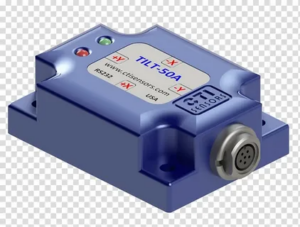Pressure transducers are essential components in various industries, playing a critical role in measuring and converting pressure into electrical signals. These devices are vital for ensuring the efficiency and safety of systems that rely on pressure measurement.
However, users often encounter common issues with pressure transducers that can impact their performance and accuracy.
This blog post will explore the fundamental aspects of pressure transducer, common problems that users may face, and effective troubleshooting techniques to address these issues.
Understanding Pressure Transducers
Pressure transducers, also known as pressure sensors, are devices designed to measure pressure and convert it into an electrical signal. These devices include essential components such as a diaphragm, strain gauges, and an electronic circuit. When exposed to pressure, the diaphragm deforms, causing the strain gauges to change resistance, producing an electrical signal proportional to the applied pressure. The electrical signal is then processed to provide accurate pressure readings, making pressure transducers indispensable in manufacturing, automotive, aerospace, and healthcare industries.
Common Problems with Pressure Transducers
Despite their importance, pressure transducer can experience various issues that affect their performance. Signal drift is a common problem where the output signal deviates from the expected value over time, leading to inaccurate pressure readings. Zero offset, another prevalent issue, occurs when the transducer does not return to a zero reading when the pressure is removed. Electrical noise can also interfere with the signal, causing erratic readings and impacting the overall reliability of the transducer. Additionally, physical damage to the diaphragm or internal components can compromise functionality.
For instance, in a manufacturing setting, signal drift in a pressure transducer used to monitor hydraulic systems can lead to inaccurate pressure readings, potentially causing equipment failure or product defects. Similarly, zero offsets in a pressure transducer installed in a medical device can compromise the accuracy of pressure measurements, posing risks to patient safety. Understanding these real-world scenarios can illustrate the significance of addressing pressure transducer issues promptly and effectively.
Troubleshooting Techniques
To address these common problems, users can employ specific troubleshooting techniques tailored to each issue. Recalibrating the transducer and implementing temperature compensation for signal drift can help stabilise the output signal. When no pressure is applied, zero offsets can be rectified by carefully adjusting the transducer to return to a zero reading. Electrical noise issues can be mitigated by using shielded cables and implementing noise filtering techniques. In cases of physical damage, identifying and replacing the damaged components is crucial to restoring the transducer’s functionality.
It is essential for users to regularly inspect and clean the transducer to prevent issues from arising. Implementing a preventive maintenance schedule can significantly reduce the likelihood of common problems and ensure the longevity of the pressure transducer.
Importance of Professional Maintenance
While many issues can be resolved using the troubleshooting above techniques, there are instances where professional maintenance and calibration services are necessary. Complex problems such as internal component damage or extensive signal drift may require specialised expertise to diagnose and rectify. Professional maintenance services address immediate issues and contribute to pressure transducers’ long-term performance and accuracy. Routine calibrations by certified professionals can ensure that the transducer continues to provide precise and reliable measurements, meeting industry standards and regulatory requirements.
Conclusion
In conclusion, understanding the fundamental role of pressure transducers and being aware of common problems is essential for users to maintain the accuracy and reliability of these critical devices. By applying the troubleshooting techniques discussed in this blog post, users can effectively address signal drift, zero offset, electrical noise, and physical damage, enhancing the performance of their pressure transducers. Additionally, emphasising the importance of regular maintenance and seeking professional assistance when needed is crucial for ensuring pressure transducers’ sustained accuracy and functionality in various industrial applications.
We aim to promote these vital components’ optimal performance and longevity in diverse industries by empowering users with the knowledge and techniques to troubleshoot pressure transducer issues. Remember, proactive maintenance and prompt troubleshooting are crucial to maximising the benefits of pressure transducer and ensuring the efficiency and safety of systems that rely on accurate pressure measurements.










